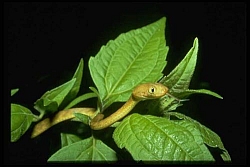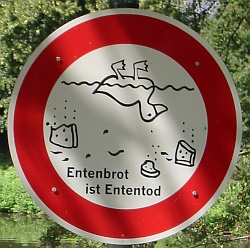4. Invasive Species in the Ocean
What harm can they do?, and Can they ever be good?
Invasive species have an impact on the environment they encountered in many different ways. They may induce ecological changes leading to the extinction of other species, i.e. a loss of habitat, which eventually brings about a loss in global biodiversity. Invasive species may also affect the economy, as well as animal and human health.
These are some examples of how alien species can adversely affect new environments:
The Brown Treesnake is native to Australia. In the 1950s it was accidentally transported in cargo to Guam, an island in the Western Pacific, about 3000 km north of Australia. The brown treesnake preys on native lizards and birds and causes frequent power outages by climbing on electrical wires. It is thus responsible for great economic losses.
The avian influenza virus, also known as bird flu or H5N1 virus was first isolated in 1996 from a farmed goose in Guangdong province, China (WHO). It is spread by migratory birds. In new environments it infects poultry, waterfowl, some mammals and even humans.
The giant hogweed (Heracleum mantegazzianum) is native to Asia and has been introduced into Europe as an ornamental plant in the middle of the 19th century. The plant has two major impacts; firstly it forms a dense canopy, out competing native riparian species. Growing near river banks it also results in an increase in soil erosion. Secondly it exudes a sap that sensitizes the skin to ultraviolet radiation (i.e. sunlight) which can result in slow to heal burns and scarring.
Are invasive species ever good?
In addition to their negative effects, some invasive species may have positive traits. These traits are often the reason a species that eventually becomes invasive was introduced to an ecosystem in the first place.
The Himalayan Blackberry (Rubus armeniacus), a native to Armenia, for example, was introduced to Europe, North America, East Asia and Australia in the 19th century because of its highly valued fruit. Apart from the negative effects of growing rapidly and crowding out native plants, the Himalayan Blackberry produces edible berries that are relished by wildlife and people alike.
How many alien species (plants, animals and micro-organisms) are there in Europe?
What do you think?
- 2,000
- 6,000
- 11,000
- 24,000




